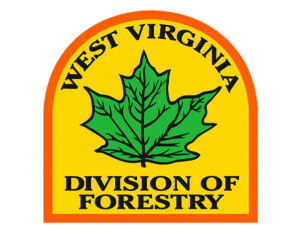
As we progress into 2023, I contemplate how I’ve gotten to where I am. From my office, I have the opportunity every day to look into the face of my first love: the rugged hills and forests of our beloved Mountain State. For three decades, I have had the privilege of serving this great state through the West Virginia Division of Forestry (WV DOF). As my roles have changed, so has the industry to which I’ve devoted my career.
I think back to my grandfather and the changes he saw during his lifetime. Born in Hambleton, a small lumber camp in Tucker County, he worked in the woods his entire life. After serving in the US Army as a Wagoner in World War I, he moved to Woodbine at the mouth of the Cranberry River and began working for the Cherry River Boom and Lumber Company. He and his team of horses worked long hours during the week skidding logs. On the weekends, he pulled a wagon out to town to get supplies. As the years passed, he saw logging change. Where there once were crosscut saws and axes, and loads pulled by teams of horses and steam powered loaders behind Shay engines. The industry changed, giving way to the innovation of chainsaws, dozers, and log trucks; machines allowed the day-to-day processes to move faster, and the amount a crew could accomplish in a week continued to grow. The opportunity and innovation of his day in the wood industry continue to carry on in West Virginia today.
But, in order to appreciate the present, we must look at where we came from. The West Virginia Division of Forestry was established in 1909 in the wake of devastating fires that burned millions of acres of our beautiful Appalachian hardwood forests. These fires followed logging practices that destroyed swaths of virgin forest lands, burning some areas down to the rock and opening the door to environmental disaster. But, led by foresters like A.B. Brooks and Gifford Pinchot, West Virginia began to see a new era of forest management. Last year alone, the WV DOF foresters, investigators, and wardens managed 890 fires and controlled fires in all of the state’s 55 counties through partnerships with local volunteers and fire departments.
In a little over 100 years, forest management has nurtured nature’s greatest asset, its resiliency. Our state forests are one of our most valuable resources, providing a source of emotional, spiritual and financial well-being. The West Virginia Division of Forestry protects and manages all State Forest resources through partnerships emphasizing stewardship. West Virginia is the third most forested state, and those same hills are once again full of a valuable and sustainable natural resource.
We continue to see changes to the timber industry, and with economic downturns and the rising costs of doing business, we continually strive to do more while having less. We also combat invasive species and diseases that attack the trees or the animals that call these lands their home.
But West Virginians have always encountered and overcome obstacles—it is the core of who we are. The mantle has been passed
to us to preserve our way of life and this natural resource for the next generation. Like those that came before us, we continue to overcome the challenges that face us. As we strive to embrace the opportunities that change provides, we build a brighter future for our forests and all those that depend on them.
















